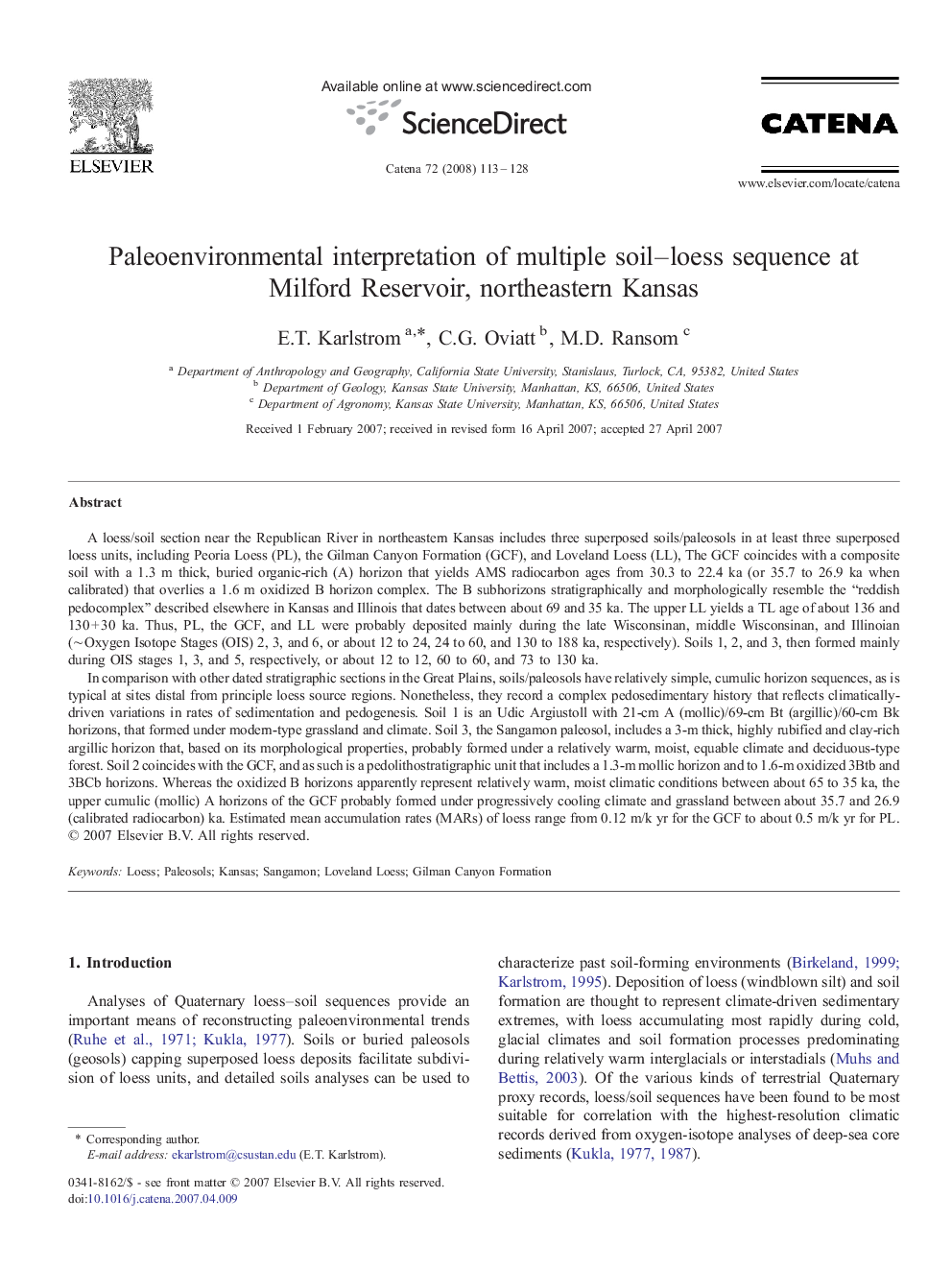| کد مقاله | کد نشریه | سال انتشار | مقاله انگلیسی | نسخه تمام متن |
|---|---|---|---|---|
| 4572573 | 1332185 | 2008 | 16 صفحه PDF | دانلود رایگان |

A loess/soil section near the Republican River in northeastern Kansas includes three superposed soils/paleosols in at least three superposed loess units, including Peoria Loess (PL), the Gilman Canyon Formation (GCF), and Loveland Loess (LL), The GCF coincides with a composite soil with a 1.3 m thick, buried organic-rich (A) horizon that yields AMS radiocarbon ages from 30.3 to 22.4 ka (or 35.7 to 26.9 ka when calibrated) that overlies a 1.6 m oxidized B horizon complex. The B subhorizons stratigraphically and morphologically resemble the “reddish pedocomplex” described elsewhere in Kansas and Illinois that dates between about 69 and 35 ka. The upper LL yields a TL age of about 136 and 130 + 30 ka. Thus, PL, the GCF, and LL were probably deposited mainly during the late Wisconsinan, middle Wisconsinan, and Illinoian (∼ Oxygen Isotope Stages (OIS) 2, 3, and 6, or about 12 to 24, 24 to 60, and 130 to 188 ka, respectively). Soils 1, 2, and 3, then formed mainly during OIS stages 1, 3, and 5, respectively, or about 12 to 12, 60 to 60, and 73 to 130 ka.In comparison with other dated stratigraphic sections in the Great Plains, soils/paleosols have relatively simple, cumulic horizon sequences, as is typical at sites distal from principle loess source regions. Nonetheless, they record a complex pedosedimentary history that reflects climatically-driven variations in rates of sedimentation and pedogenesis. Soil 1 is an Udic Argiustoll with 21-cm A (mollic)/69-cm Bt (argillic)/60-cm Bk horizons, that formed under modern-type grassland and climate. Soil 3, the Sangamon paleosol, includes a 3-m thick, highly rubified and clay-rich argillic horizon that, based on its morphological properties, probably formed under a relatively warm, moist, equable climate and deciduous-type forest. Soil 2 coincides with the GCF, and as such is a pedolithostratigraphic unit that includes a 1.3-m mollic horizon and to 1.6-m oxidized 3Btb and 3BCb horizons. Whereas the oxidized B horizons apparently represent relatively warm, moist climatic conditions between about 65 to 35 ka, the upper cumulic (mollic) A horizons of the GCF probably formed under progressively cooling climate and grassland between about 35.7 and 26.9 (calibrated radiocarbon) ka. Estimated mean accumulation rates (MARs) of loess range from 0.12 m/k yr for the GCF to about 0.5 m/k yr for PL.
Journal: CATENA - Volume 72, Issue 1, 1 January 2008, Pages 113–128